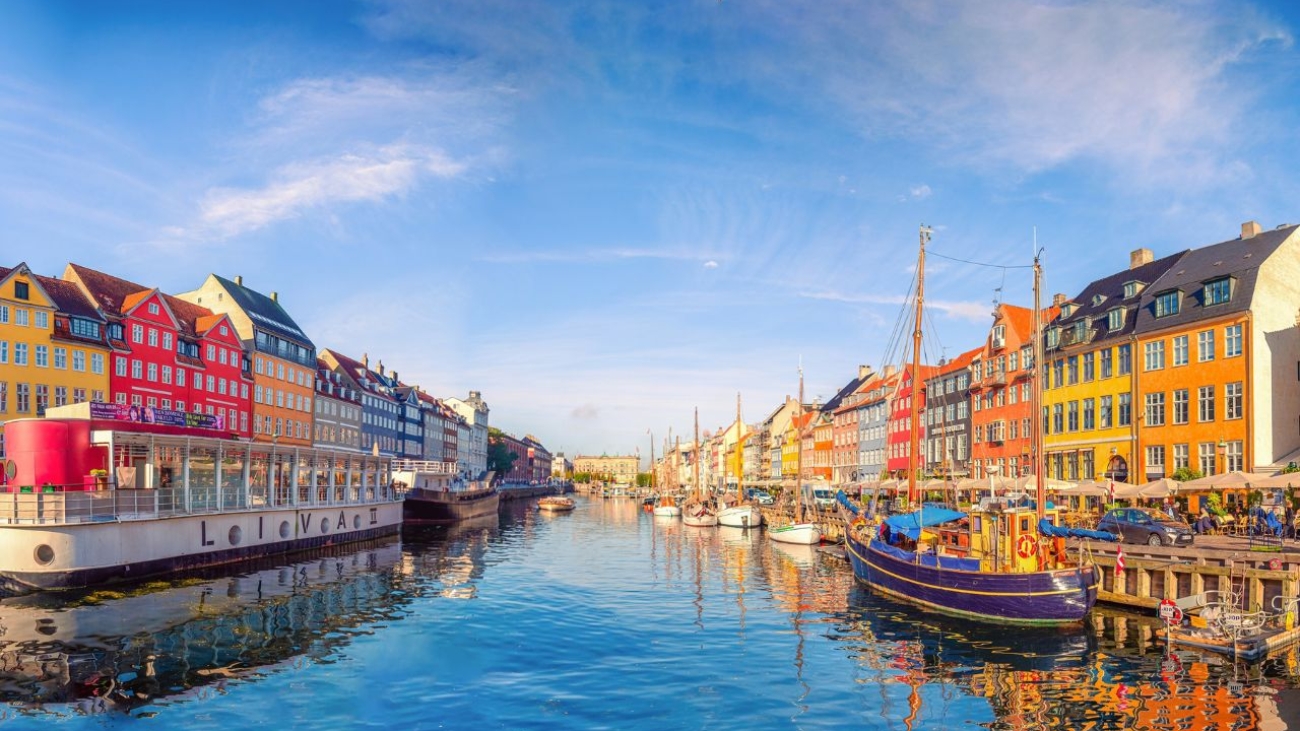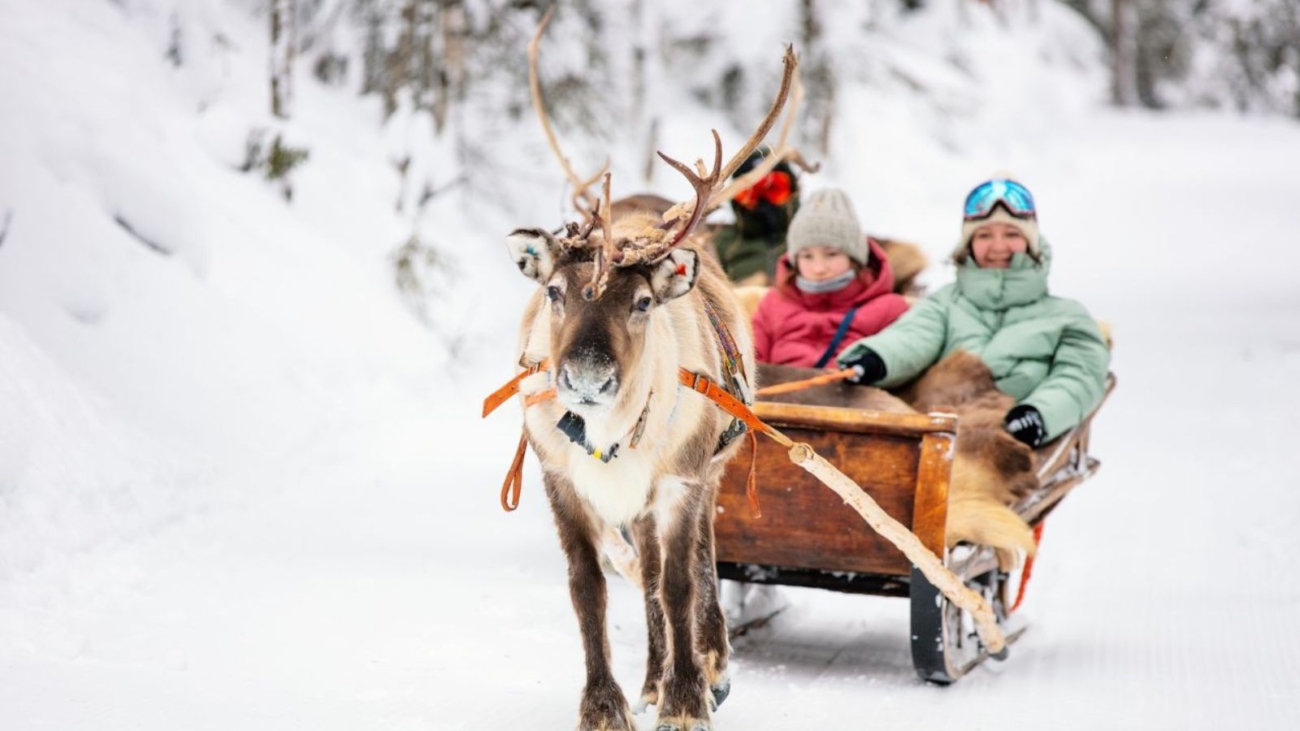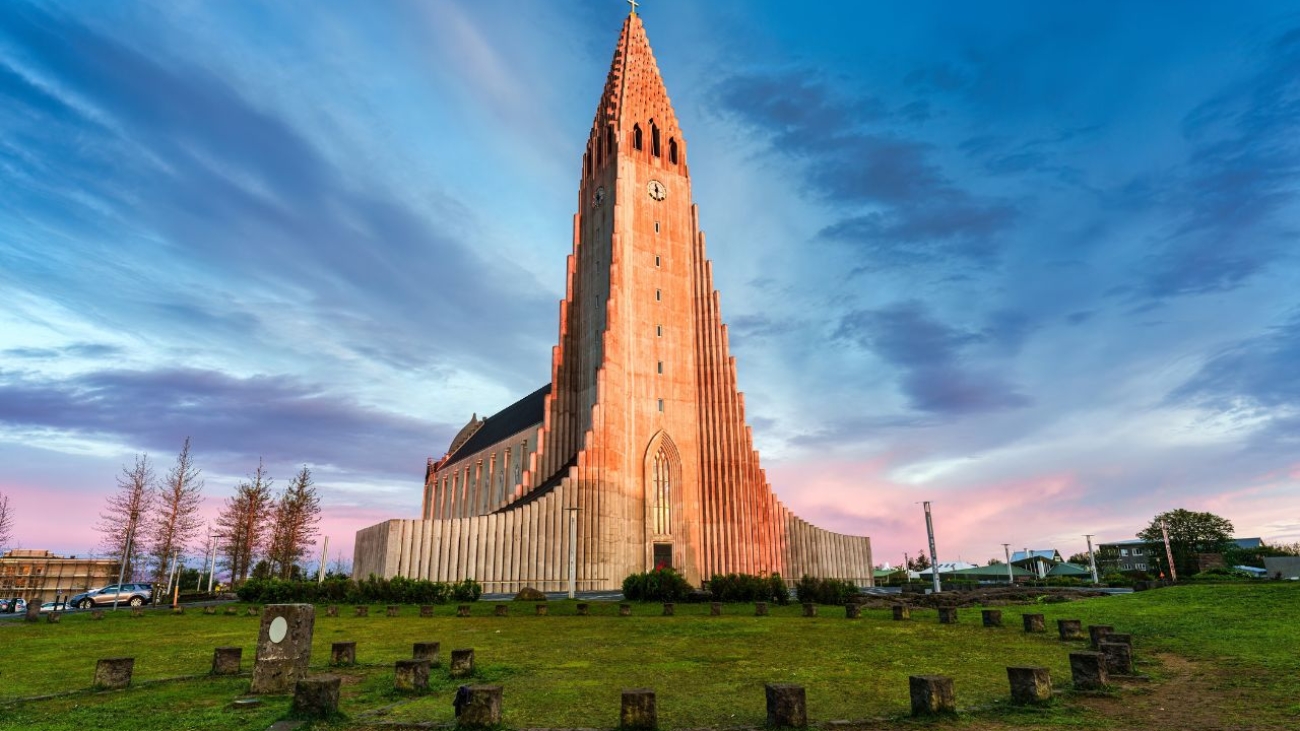Denmark, the southernmost of the Scandinavian countries, is a land of fairy tales, vibrant cities, and stunning coastal landscapes. Known for its rich history, innovative design, and warm hospitality, Denmark offers a perfect blend of cultural experiences and natural beauty. Whether you’re exploring the bustling streets of Copenhagen, delving into Viking history, or enjoying the serene countryside, Denmark has something to captivate every traveller. Here’s your ultimate guide to the best things to do in Denmark.
Top 10 Things to Do in Denmark
- Explore Copenhagen: Denmark’s Capital City
- Visit Tivoli Gardens
- Discover the Viking History at Roskilde
- Wander Through the Streets of Aarhus
- Experience the Serenity of Skagen
- Tour Kronborg Castle
- Relax on the Beaches of Bornholm
- Visit Legoland in Billund
- Explore the Danish Riviera
- Discover the Fairy-Tale Castles of Funen
1. Explore Copenhagen: Denmark’s Capital City
Copenhagen, the capital of Denmark, is a vibrant city that seamlessly blends old-world charm with modern innovation. Known for its colourful buildings, historic sites, and world-class culinary scene, Copenhagen is a must-visit destination.
- Nyhavn: The iconic Nyhavn district is one of Copenhagen’s most recognizable spots. Lined with brightly coloured 17th and 18th-century townhouses, Nyhavn is a picturesque area filled with restaurants, cafes, and historic wooden ships docked in the harbour. It’s the perfect place for a leisurely stroll or a relaxing meal by the water.
- The Little Mermaid: No visit to Copenhagen is complete without seeing the Little Mermaid statue, a tribute to Hans Christian Andersen’s famous fairy tale. Located on the Langelinie promenade, this small yet iconic statue is a symbol of the city’s literary heritage.
- Tivoli Gardens: One of the world’s oldest amusement parks, Tivoli Gardens is a magical place that offers fun for all ages. Located in the heart of Copenhagen, Tivoli features thrilling rides, beautiful gardens, and a variety of entertainment, including concerts and theatrical performances.
- Christiansborg Palace: Home to the Danish Parliament, Supreme Court, and Prime Minister’s Office, Christiansborg Palace is a historic site with roots dating back to the 12th century. Visitors can explore the palace’s opulent rooms, royal stables, and the ruins beneath the palace.
2. Visit Tivoli Gardens
Tivoli Gardens, located in the heart of Copenhagen, is not just an amusement park—it’s an institution. Opened in 1843, Tivoli has been delighting visitors for nearly two centuries and remains one of Denmark’s most beloved attractions.
- Rides and Attractions: Tivoli Gardens is home to a mix of classic and modern rides, including the Rutschebanen, one of the oldest wooden roller coasters still in operation. For those seeking a thrill, the Vertigo ride offers high-speed spins and loops, while the Ferris wheel provides stunning views of Copenhagen.
- Gardens and Architecture: Tivoli is known for its beautifully landscaped gardens and charming architecture. The park’s Moorish-inspired Nimb Hotel and Chinese-style Pantomime Theatre add to the enchanting atmosphere.
- Events and Entertainment: Tivoli Gardens hosts a variety of events throughout the year, including concerts, ballet performances, and fireworks displays. The park is particularly magical during the Christmas season when it transforms into a winter wonderland with festive lights, markets, and ice skating.
3. Discover the Viking History at Roskilde
Roskilde, located just a short drive from Copenhagen, is a historic city known for its Viking heritage and impressive cathedral.
- Roskilde Cathedral: A UNESCO World Heritage Site, Roskilde Cathedral is the burial site of Danish monarchs and a masterpiece of Gothic architecture. The cathedral’s twin spires dominate the city’s skyline, and its interior is filled with beautiful chapels, tombs, and royal artefacts.
- Viking Ship Museum: The Viking Ship Museum in Roskilde is a must-visit for history enthusiasts. The museum is home to five well-preserved Viking ships that were excavated from the Roskilde Fjord. Visitors can learn about Viking shipbuilding techniques, explore reconstructed ships, and even take a boat trip on a traditional Viking vessel.
- Roskilde Festival: If you’re visiting Denmark in the summer, the Roskilde Festival is one of Europe’s largest and most famous music festivals. Held annually, the festival attracts top international artists and offers a unique blend of music, art, and community spirit.
4. Wander Through the Streets of Aarhus
Aarhus, Denmark’s second-largest city, is a vibrant cultural hub known for its blend of historic charm and modern innovation. Located on the east coast of the Jutland peninsula, Aarhus is a city that’s easy to explore on foot or by bike.
- ARoS Aarhus Art Museum: ARoS is one of the largest art museums in Scandinavia and a must-visit for art lovers. The museum is famous for its Rainbow Panorama, a circular walkway on the roof that offers 360-degree views of the city through coloured glass panels.
- The Old Town (Den Gamle By): The Old Town is an open-air museum that recreates Danish life from the 18th to the 20th century. Visitors can explore historic buildings, interact with costumed actors, and learn about traditional crafts and trades.
- Aarhus Street Food: Aarhus is known for its vibrant food scene, and Aarhus Street Food is a great place to sample local and international cuisine. Located in a former bus garage, this food hall features a variety of stalls offering everything from Danish smørrebrød to Asian street food.
5. Experience the Serenity of Skagen
Located at the northern tip of Denmark, Skagen is a picturesque coastal town known for its stunning natural beauty and unique light that has inspired many artists.
- Grenen: Grenen is the northernmost point of Denmark, where the North Sea and the Baltic Sea meet. Visitors can walk along the sandy beach to the tip of Grenen and stand with one foot in each sea. The area is also a popular spot for birdwatching, particularly during the spring and autumn migrations.
- Skagen’s Art Scene: Skagen has long been a haven for artists, and the town is home to several museums and galleries showcasing the work of the Skagen Painters. The Skagens Museum features works by artists such as P.S. Krøyer and Anna Ancher, who were inspired by the town’s unique light and landscapes.
- Råbjerg Mile: Råbjerg Mile is one of Europe’s largest migrating sand dunes, located just south of Skagen. This massive dune moves about 15 meters per year, and visitors can climb to the top for panoramic views of the surrounding countryside and coastline.
6. Tour Kronborg Castle
Kronborg Castle, located in Helsingør, is one of the most famous castles in Denmark and a UNESCO World Heritage Site. Known as the setting for Shakespeare’s Hamlet, Kronborg is a place where history and legend come alive.
- Explore the Castle: Visitors can tour the castle’s grand halls, royal chambers, and dark dungeons. The King’s Chamber and the Ballroom are particularly impressive, with their ornate decorations and historical significance.
- Shakespeare and Hamlet: Every summer, Kronborg Castle hosts performances of Hamlet, bringing Shakespeare’s tragedy to life in the very place where it was set. The castle’s association with Hamlet adds an extra layer of intrigue to any visit.
- The Maritime Museum: Located near Kronborg Castle, the Maritime Museum of Denmark offers fascinating insights into the country’s seafaring history. The museum is housed in a former dry dock and features exhibits on Denmark’s maritime heritage, including ship models, navigational instruments, and artefacts from the Danish Navy.
7. Relax on the Beaches of Bornholm
Bornholm, an island located in the Baltic Sea, is known for its beautiful beaches, picturesque villages, and unique rock formations. It’s a popular holiday destination for both Danes and international visitors.
- Dueodde Beach: Dueodde Beach is one of the most famous beaches in Denmark, known for its fine white sand and clear waters. The beach is ideal for swimming, sunbathing, and beachcombing, and it’s also a great spot for windsurfing and kiteboarding.
- Hammershus Castle Ruins: The ruins of Hammershus Castle, located on a cliff overlooking the sea, are a must-visit in Bornholm. The castle dates back to the 13th century and offers stunning views of the surrounding landscape. Visitors can explore the ruins and learn about the castle’s history through informative displays.
- Bornholm’s Round Churches: Bornholm is home to several unique round churches, which were built in the 12th and 13th centuries. These fortified churches served as places of worship and refuge during times of conflict. The most famous of these is the Østerlars Church, known for its distinctive circular design and medieval frescoes.
8. Visit Legoland in Billund
Legoland in Billund is one of Denmark’s most popular attractions, especially for families with children. Opened in 1968, Legoland was the first theme park dedicated to the famous Danish toy, and it remains a beloved destination for fans of all ages.
- Miniland: Miniland is the heart of Legoland, featuring miniature replicas of famous landmarks and cities built entirely out of Lego bricks. From the canals of Copenhagen to the Eiffel Tower, Miniland showcases impressive Lego architecture on a small scale.
- Rides and Attractions: Legoland offers a wide range of rides and attractions, from gentle rides for younger children to thrilling roller coasters for adrenaline seekers. Popular attractions include the Dragon Roller Coaster, the Polar X-plorer, and the interactive Ninjago World.
- Lego House: Located near Legoland, the Lego House is a must-visit for Lego enthusiasts. This interactive museum is dedicated to all things Lego, offering hands-on exhibits, creative workshops, and a chance to build your own Lego creations.
9. Explore the Danish Riviera
The Danish Riviera, located along the north coast of Zealand, is a picturesque region known for its sandy beaches, charming fishing villages, and elegant seaside resorts.
- Gilleleje: Gilleleje is a historic fishing village and a popular destination on the Danish Riviera. The village is known for its charming harbour, fresh seafood, and beautiful beaches. Visitors can explore the local shops, dine at seaside restaurants, and visit the Gilleleje Museum, which offers insights into the region’s maritime history.
- Tisvildeleje: Tisvildeleje is another popular spot on the Danish Riviera, known for its wide sandy beaches, pine forests, and vibrant summer festivals. The village has a relaxed atmosphere, making it a perfect place to unwind and enjoy the natural beauty of the area.
- Louisiana Museum of Modern Art: Located near the Danish Riviera, the Louisiana Museum of Modern Art is one of Denmark’s premier art museums. The museum is set in a beautiful park overlooking the Øresund Strait and features a world-class collection of modern and contemporary art.
10. Discover the Fairy-Tale Castles of Funen
Funen, often referred to as the “Garden of Denmark,” is an island known for its rolling hills, apple orchards, and fairy-tale castles. Exploring Funen’s castles is like stepping into a storybook.
- Egeskov Castle: Egeskov Castle is one of the best-preserved Renaissance water castles in Europe. Surrounded by a moat and beautiful gardens, Egeskov is a true fairy-tale setting. Visitors can explore the castle’s lavish interiors, walk through the gardens, and visit the on-site museums, which include collections of vintage cars and motorcycles.
- Svendborg: The town of Svendborg, located on the southern coast of Funen, is a charming base for exploring the island’s castles and countryside. Svendborg is known for its historic buildings, lively harbour, and cultural events, including the annual Svendborg Sound Festival.
- Odense: Odense, the birthplace of Hans Christian Andersen, is the largest city in Funen and a hub of culture and history. Visitors can explore the Hans Christian Andersen Museum, stroll through the city’s medieval streets, and visit the impressive Odense Cathedral.
Conclusion
Denmark is a country of endless charm, rich history, and diverse landscapes. Whether you’re exploring the vibrant streets of Copenhagen, delving into Viking history, or relaxing on a sandy beach, every moment in Denmark offers a chance to create unforgettable memories. This guide covers just a fraction of what this incredible country has to offer, so pack your bags and get ready to discover the magic of Denmark.
Pro Tips for Visiting Denmark:
- Weather: Denmark’s weather can be unpredictable, so pack layers and be prepared for sudden changes.
- Transport: Denmark has an excellent public transport system, including trains, buses, and ferries. Consider getting a Copenhagen Card for unlimited access to public transport and free entry to many attractions.
- Language: While Danish is the official language, English is widely spoken, making it easy for visitors to communicate.




